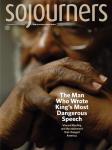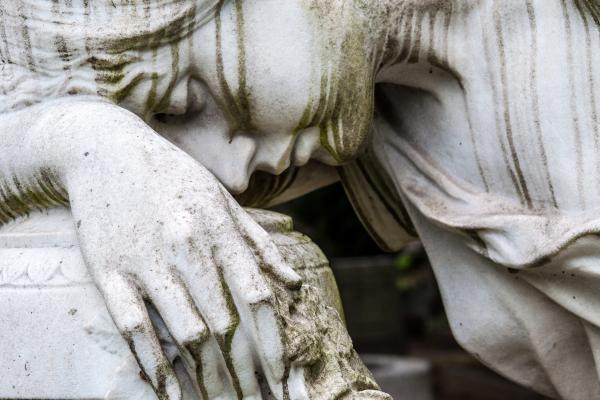WHEN JOHANNES BRAHMS first played his German Requiem in Vienna in 1867, the audience was shocked. In fact, scholars report that some “hissed and booed and behaved quite boorishly.”
This October, when the St. Louis Symphony performed the same piece along with German composer Detlev Glanert’s arrangement of Brahms’ Four Preludes and Serious Songs, it elicited a similar response.
Not to the work itself, but to what occurred during intermission.
As conductor Markus Stenz took the stage, two audience members began to sing. In strong, clear voices, they performed Florence Patton Reece’s famous justice hymn: “Which side are you on, friend? Which side are you on?” Nearly a dozen more scattered throughout Powell Hall joined in. While the audience watched in stunned silence, a banner unfurled from the balcony with a silhouette of a man’s face. It said: Requiem for Mike Brown 1996-2014.
As in Vienna, there were some boos from the audience and a few expletives—more disruption following the Aug. 9 shooting death of Michael Brown, an unarmed African-American teenager, by white police officer Darren Wilson. While the Vienna audience complained that Brahms’ music was too religious for a secular setting, one St. Louis symphony-goer asked, “Is Powell Hall a proper venue for a protest?” And a Catholic priest challenged: “Instead of chanting ‘Which side are you on?’ further dividing the community, try singing ‘How can we heal?’”
“A concert hall is a public place, and public protest is possible there,” composer Glanert told Sojourners. “Perhaps [Brahms] would have quoted the Bible: ‘Whoever hates his brother is a murderer ... no murderer has eternal life within him.’”
Like this performance, like the events in Ferguson, Mo., Advent is a season of disruption, a season of silences and unexpected angelic choirs, one of prophetic demands and alarming wake-up calls. In the opening movement of his Requiem, Brahms draws on verses in our Advent cycle: “They that sow in tears shall reap in joy” (Psalm 126:5).
Advent scriptures make demands on us. The familiar opening of Isaiah 40—“Comfort, comfort, oh my people”—is an answer to Lamentations 1:17: “Zion stretches out her hands, but there is no one to comfort her.” After more than150 years of exile, God breaks God’s silence through the voice of the prophet with an offer of comfort.
Zion stretches out her hands, imploring. In a brilliant essay on what she calls a “choreopolitics of freedom,” dance professor Anusha Kedhar writes, “The ‘hands up don’t shoot’ slogan implores the protester not only to stand in solidarity with Michael Brown by re-enacting his last movements, but also to empathize by embodying his final corporeal act of agency.”
The great Advent of our God demands nothing less. Catholic theologian James Alison puts it this way: “The One who is coming will not preside over us, but will teach us to want peace from within, and to learn the habits that make it possible. The One who loves us will come as one we despise, and crucify: The definitive puncturing of our god-fantasies, and yet the Presence of one who is powerfully determined not to let us remain wedded to our self-destruction.”
Back in St. Louis’ Powell Hall, the demonstrators completed their performance in about two minutes, and then furled their banners and exited to the percussive chant of “Black lives matter.” Some in the orchestra clapped.
The conductor tapped the podium with his baton. Slowly and magnificently, Brahms’ Requiem opened with pulsing bass and unfolding choral line from Matthew 5: “Blessed are they who mourn, for they shall be comforted.”

Got something to say about what you're reading? We value your feedback!
